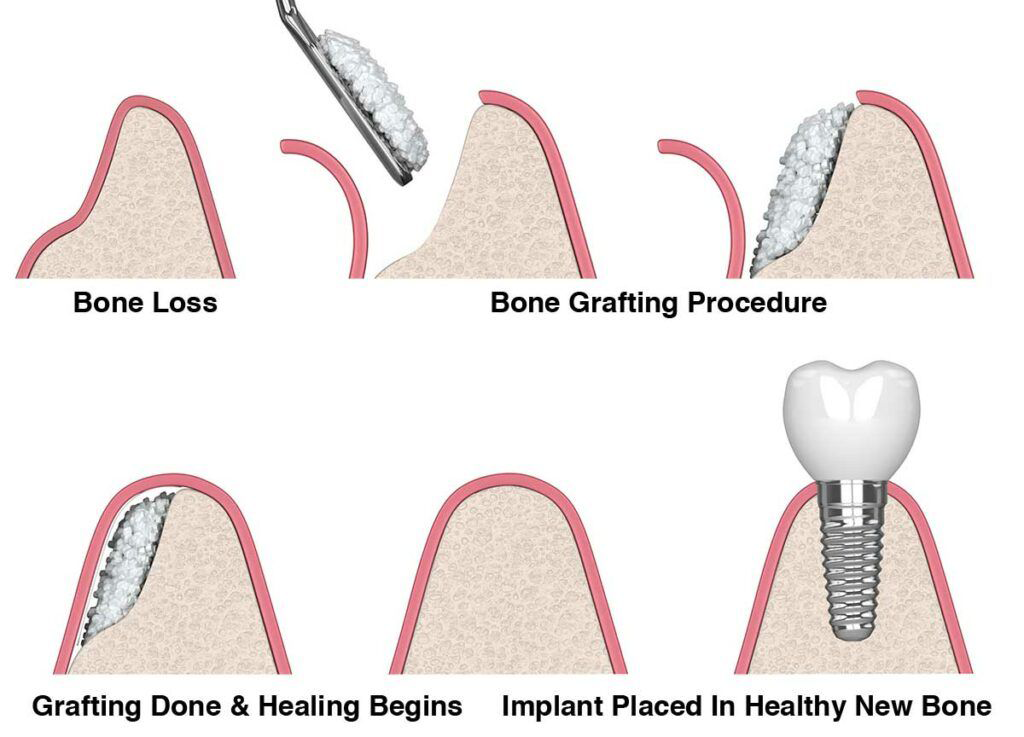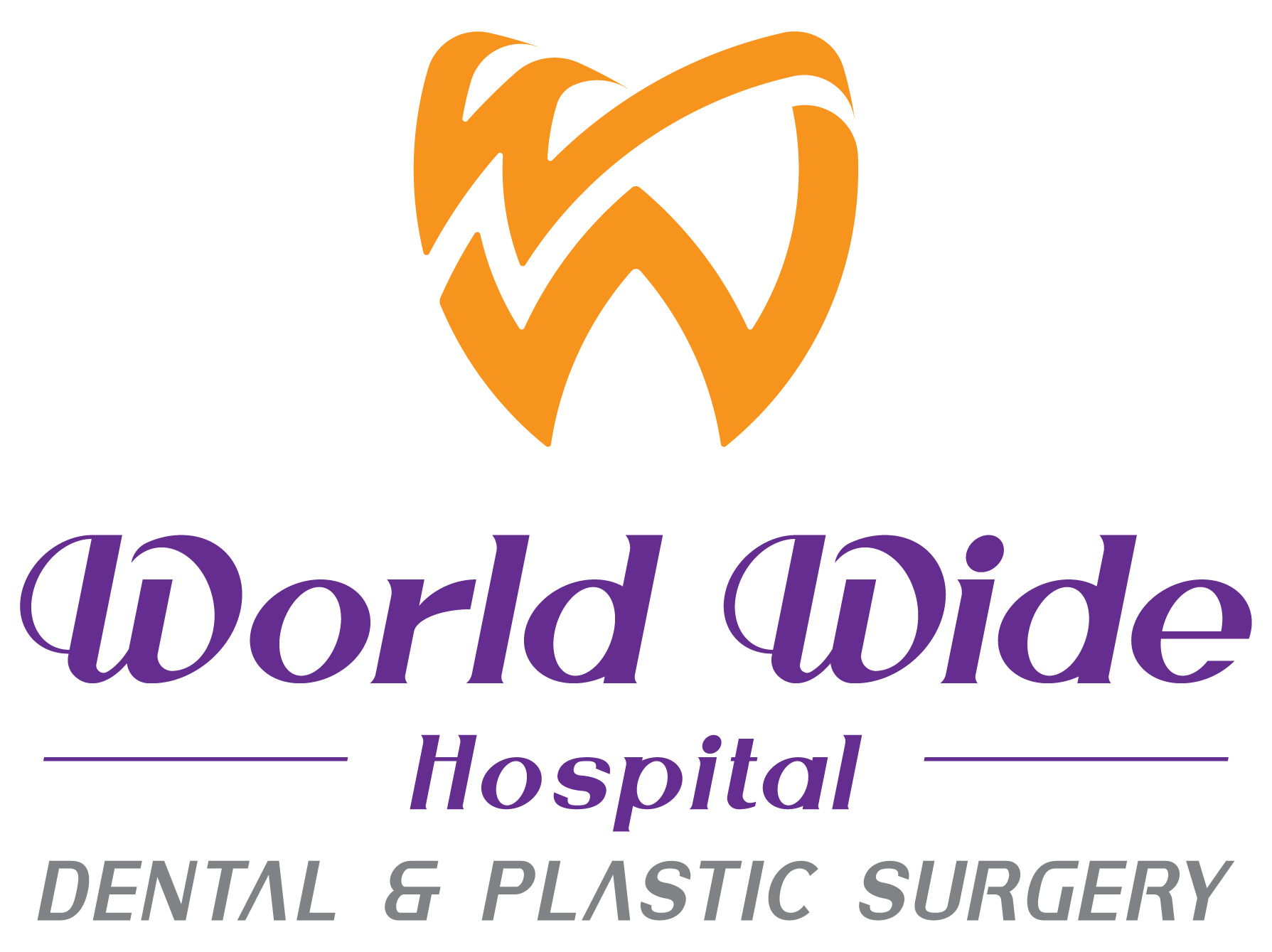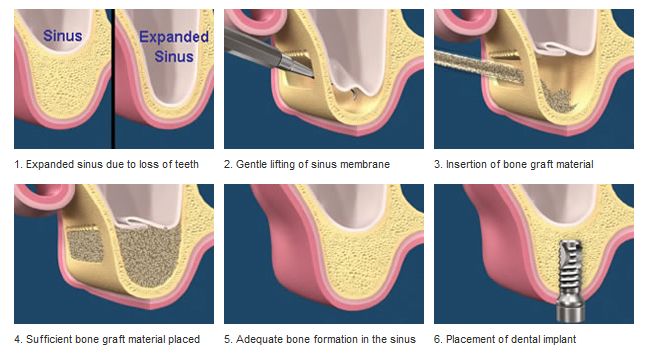BONE GRAFT
Bone graft adds volume and density to the jawbone. To perform the bone graft, an opening is made in the gum tissue, and bone powder is packed into the area, to improve the volume and density of the bone to support the implant. In some cases, the bone graft needs to be covered with a membrane for additional protection, to prevent unwanted tissues from growing into the area of bone healing.
Bone graft material can be: 1/ the patient’s natural bone from another location in the jaw, 2/ a purchase from a human tissue bank or animal tissue bank, or 3/ synthetic material.


 Tiếng Việt
Tiếng Việt

